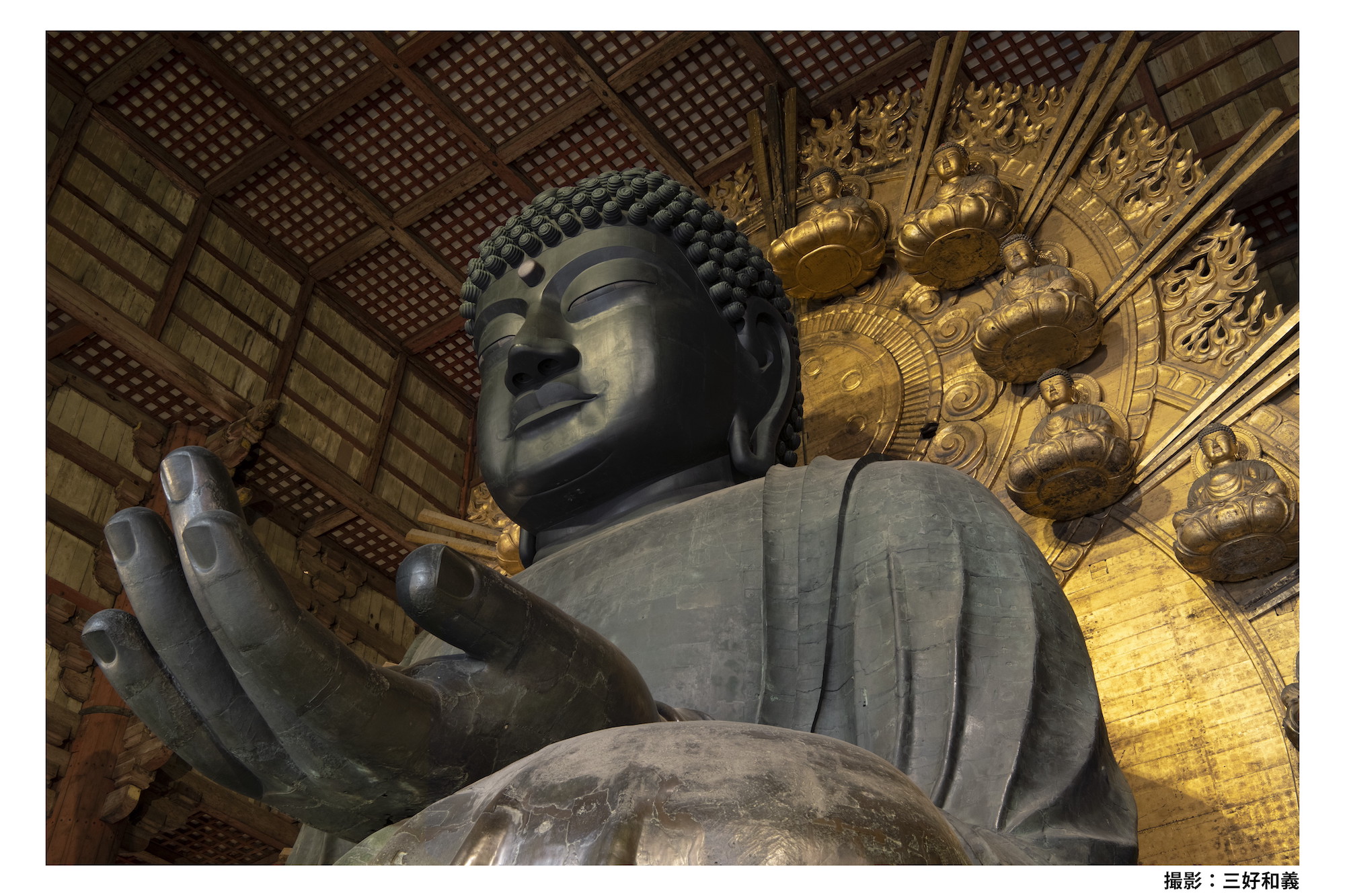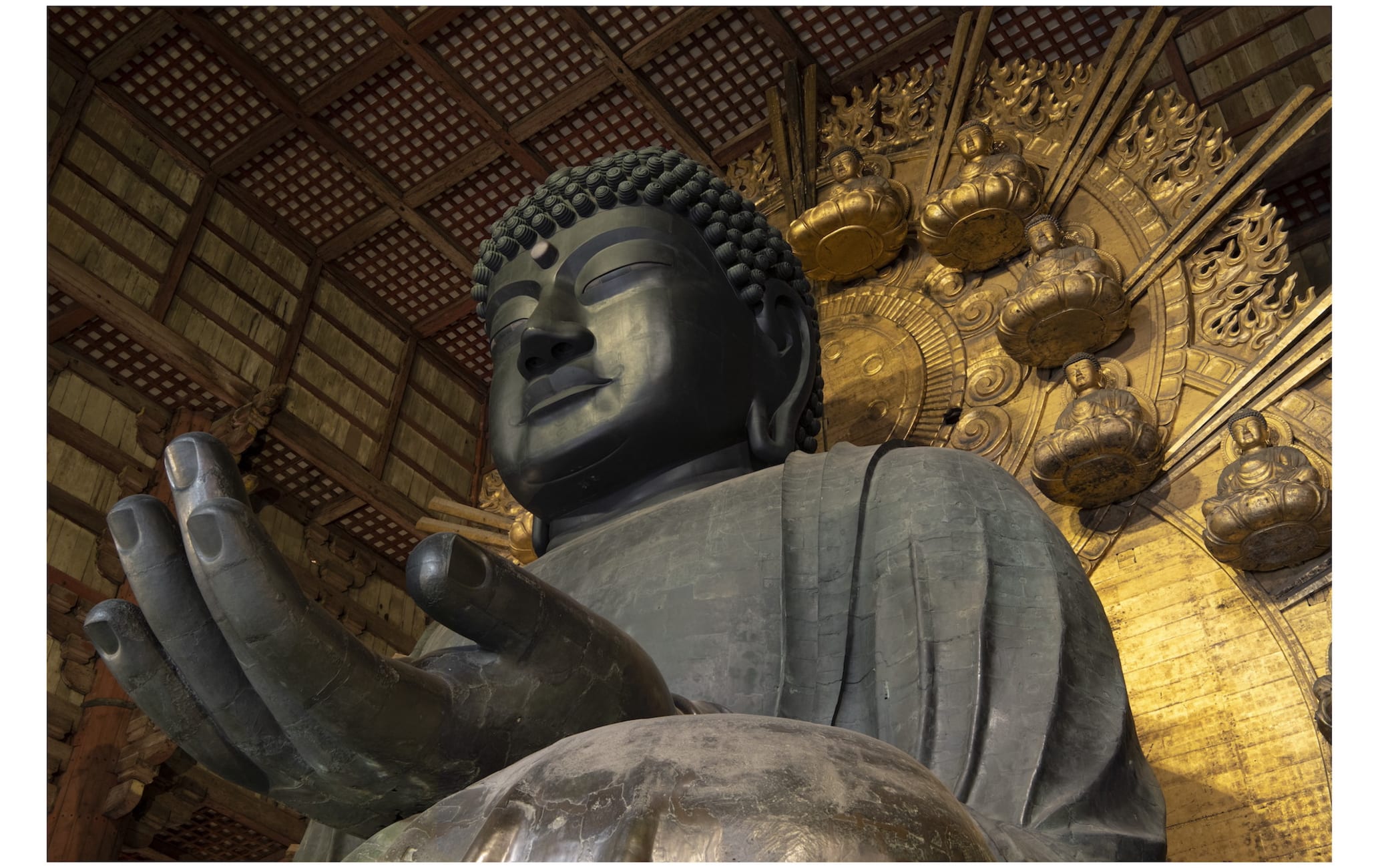The Great Buddha statue designated as a national treasure, and the world's largest wooden structure
Todaiji Temple was originally founded during the Nara period (710-784), when Nara city, now popular with tourists, originally served as the capital of Japan. It has been designated as one of the Historic Monuments of Ancient Nara by the UNESCO World Heritage Convention along with other culturally and historically significant items throughout the city.
Don't Miss
- Witness the Great Buddha statue, created by the combined efforts of 2.6 million people
- Browse the world's largest Great Buddha Hall that enshrines the Great Buddha statue
- Climb the stairs to the Nigatsu-do Hall and capture fantastic views of the Nara basin
How to Get There
If traveling from Osaka or Kyoto, take JR or Kintetsu Nara lines and get off at either JR Nara Station or Kintetsu Nara Station. It takes 40 minutes from Osaka, and 50 minutes from Kyoto respectively.
Todaiji Temple is just a 20-minute walk from Kintetsu Nara Station. If traveling by city bus, it is a 5-minute walk from Todaiji Daibutsu-den/Kasuga-taisha-mae stops. Alternatively, board at Kintetsu Nara Station and get off at Daibutsuden-mae-chushajo stop if traveling via the loop bus (Omiya Street Route or Nara Park Route).
Quick Facts
The Great Buddha statue was created in the year 752
The Daibutsu-den that surrounds it was constructed in 1709
The Great Buddha is 14.98 meters tall. Even its ears are 2.54 meters in length
Todaiji Temple and its numerous national treasure buildings
Wishing for happiness for all, it took a total of roughly 2.6 million people to come together and create the Great Buddha statue that now sits in Todaiji Temple's Daibutsu-den, the Great Buddha hall. The statue itself is referred to as the “Daibutsu” in Japanese, with “dai” meaning giant and “butsu” meaning Buddha, however it is modeled after the Vairocana Buddha.
Aside from the Great Buddha, Todaiji Temple is home to numerous national treasures and cultural assets, and so the temple itself was registered as a Historic Monument of Ancient Nara by the UNESCO World Heritage Convention in 1998 .

Photo: Nara Visitors Bureau
Among the world's largest wooden buildings
Alongside the Great Buddha statue, the Daibutsu-den hall was also designated a national treasure. A tremendously large wooden building, it suffered terribly to two great fires before being rebuilt again in 1709. It was originally 88 meters in length, but was scaled down to in the process of rebuilding due to financial difficulties and now stands at 57 meters. Despite this, it still stands as the largest wooden structures in the world.

Photo: Nara Visitors Bureau
Commanding views of Nara city
Nigatsu-do hall can be found east of the Daibutsu-den hall of Todaiji Temple, and was constructed during the eighth century (although it needed to be rebuilt in 1669). It sits somewhat distanced from the hustle and bustle of the city, and while the stairs to the top are a little steep, but the views of Nara city that can be seen from the balcony are a great reward. It is a beautiful location to pause and take a short break, especially as the lanterns and the city lights begin to glow as the sun begins to set.
Aside from the views, Nigatsu-do is also known for hosting the “Shuni-e (Omizutori Festival)” in March to pray for the well-being of the people. The “Omizutori ” ritual is held before dawn on March 13, where the sacred water is transported from the well beneath the Nigatsu-do hall in offering to the goddess Kannon.
Large torches are lit in the evening in order to guide the monks as they move, creating a fantastic spectacle of fire and water.


Photo: Nara Visitors Bureau / Eisuke Ueda
Other World Heritage Sites in Nara with long histories
There are many deer in Nara Park next to Todaiji Temple. Visitors will have no trouble spotting them while strolling through the center of town, especially if traveling between the other UNESCO World Heritage Sites, a small distance from Todaiji Temple. Be it on foot or by short bus ride, other notable sites well worth a visit include Kofukuji Temple , Yakushiji Temple , Toshodaiji Temple , and Kasuga Taisha Shrine .

























































